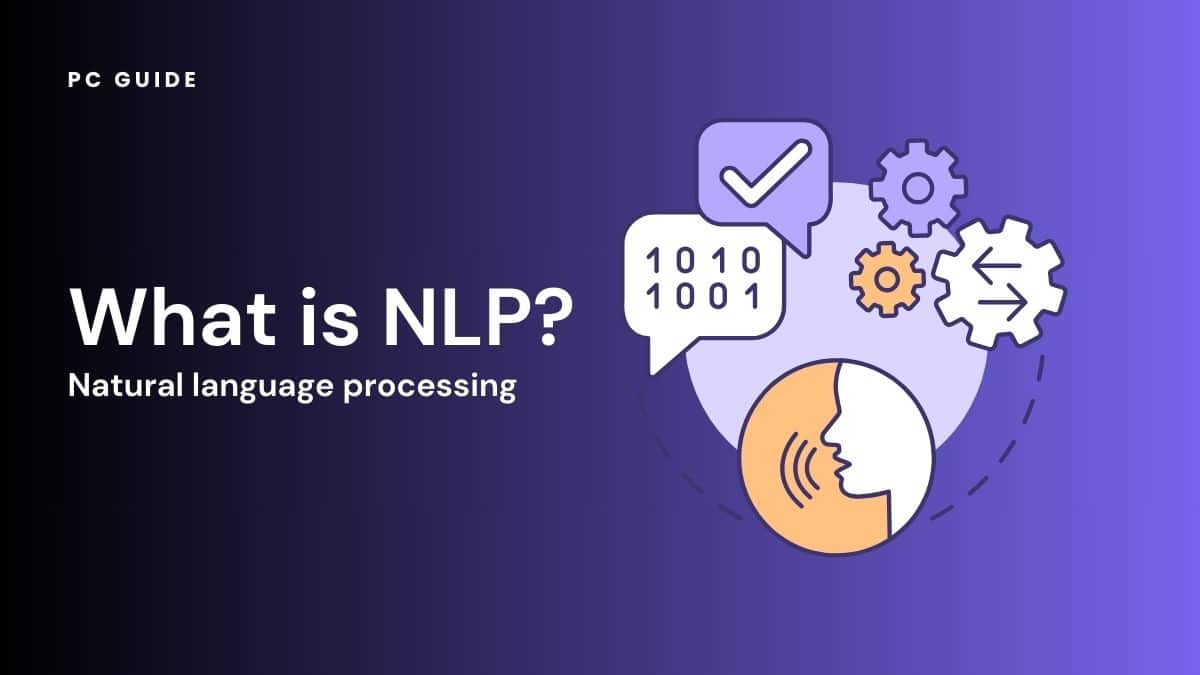What is natural language processing? NLP explained

Table of Contents
Interest in NLP has risen rapidly this year, in conjunction with the rise of AI chatbots. To be clear, we’re talking about natural language processing, not neuro linguistic programming; The latter falls outside the remit of PC Guide. The former is a branch of artificial intelligence, and the most accessible kind today. So, what is natural language processing, and how does NLP work?
What is natural language processing? – NLP simplified
Natural language processing is the field of study wherein computers can communicate in natural human language. This is a subset of artificial intelligence (AI).
Prime Day is finally here! Find all the biggest tech and PC deals below.
- Sapphire 11348-03-20G Pulse AMD Radeon™ RX 9070 XT Was $779 Now $739
- AMD Ryzen 7 7800X3D 8-Core, 16-Thread Desktop Processor Was $449 Now $341
- ASUS RTX™ 5060 OC Edition Graphics Card Was $379 Now $339
- LG 77-Inch Class OLED evo AI 4K C5 Series Smart TV Was $3,696 Now $2,796
- Intel® Core™ i7-14700K New Gaming Desktop Was $320.99 Now $274
- Lexar 2TB NM1090 w/HeatSink SSD PCIe Gen5x4 NVMe M.2 Was $281.97 Now $214.98
- Apple Watch Series 10 GPS + Cellular 42mm case Smartwatch Was $499.99 Now $379.99
- ASUS ROG Strix G16 (2025) 16" FHD, RTX 5060 gaming laptop Was $1,499.99 Now $1,274.99
- Apple iPad mini (A17 Pro): Apple Intelligence Was $499.99 Now $379.99
*Prices and savings subject to change. Click through to get the current prices.
IBM is one of few legacy companies responsible for historic progress in the realm of AI, alongside Bell Labs, without whom voice recognition would be decades behind where it is today.
Essential AI Tools
The International Business Machines Corporation describes NLP as the intersection of computational linguistics – that is, defining the rules of language we humans follow in way that a computer can understand – with machine learning – thereby allowing the computer to infer what these rules are based on examples, and set them for itself without a human doing so manually.
“Together, these technologies enable computers to process human language in the form of text or voice data and to ‘understand' its full meaning, complete with the speaker or writer's intent and sentiment.” – IBM
NLP is closely related to NLU (Natural language understanding) and POS (Part-of-speech tagging).
What are some examples of NLP?
ChatGPT is the most prominent example of natural language processing on the web. Surpassing 100 million users in under 2 months, OpenAI’s AI chat bot was briefly the fastest app in history to do so, until being surpassed by Instagram’s Threads.
While chatbots are not the only use case for linguistic neural networks, they are probably the most accessible and useful NLP tools today. These tools also include Microsoft’s Bing Chat, Google Bard, and Anthropic Claude.
How does it work?
Everyday language, the kind the you or I process instantly – instinctively, even – is a very tricky thing to map into one’s and zero’s. Human language is a complex system of syntax, semantics, morphology, and pragmatics. An effective digital analogue (a phrase that itself feels like a linguistic crime) encompasses many thousands of dialects, each with a set of grammar rules, syntaxes, terms, and slang.
Therefore, deep learning models need to come with recursive and rules-based guidelines for natural language generation (NLG).
IBM provides enterprise AI solutions, including the ability for corporate clients to train their own custom machine learning models. Along side studying code from open-source models like Meta’s Llama 2, the computer science research firm is a great place to start when learning how NLP works.
“The Python programming language provides a wide range of tools and libraries for attacking specific NLP tasks. Many of these are found in the Natural Language Toolkit, or NLTK, an open source collection of libraries, programs, and education resources for building NLP programs. The NLTK includes libraries for many of the NLP tasks listed above, plus libraries for subtasks, such as sentence parsing, word segmentation, stemming and lemmatization (methods of trimming words down to their roots), and tokenization (for breaking phrases, sentences, paragraphs and passages into tokens that help the computer better understand the text).”
What is NLP used for? – Speech-to-text & text-to-speech AI systems
NLP (Natural language processing) applies to voice-operated assistants like Apple’s Siri and Amazon’s Alexa. It’s also part of text-to-speech GPS systems that dictate directions to you, or speech-to-text dictation software. This in addition to customer service automation that can converse with a human, diagnose issues, and explain how to solve them. Text summarization and text expansion both require NLP. Last, and certainly not least, it’s used for language models, the fundamental tech that the prior examples rely on.
It is used for sentiment analysis, an essential business tool in data analytics. Human behaviour and the data mappings thereof are becoming more and more synchronized, with the AI-driven ability to analyze the language used in customer feedback forms, social media posts, responses, reviews, and more to extract attitudes and emotions in response to products, promotions, and events–information companies can use in product designs, advertising campaigns, and more.” This allows an LLM algorithm to draw insights from data, and answer questions about it in natural human language.
Further examples include speech recognition, machine translation, syntactic analysis, spam detection, and word removal.

